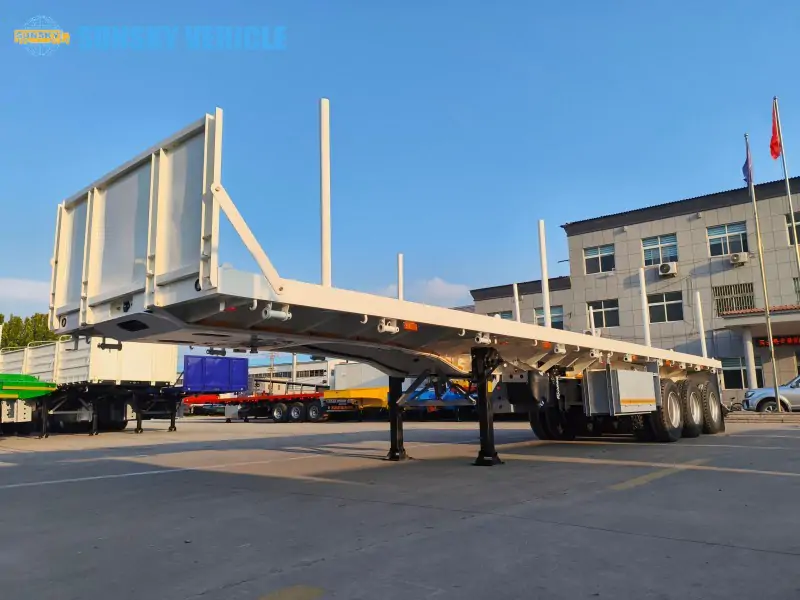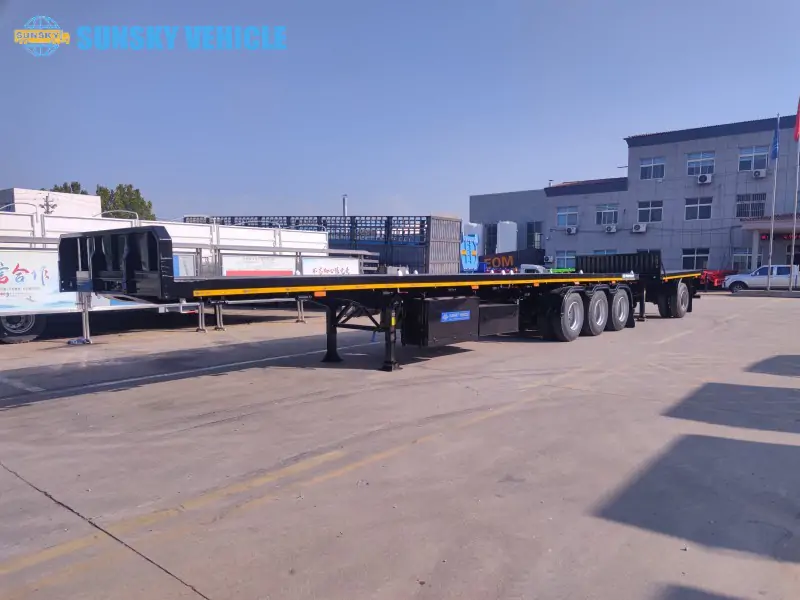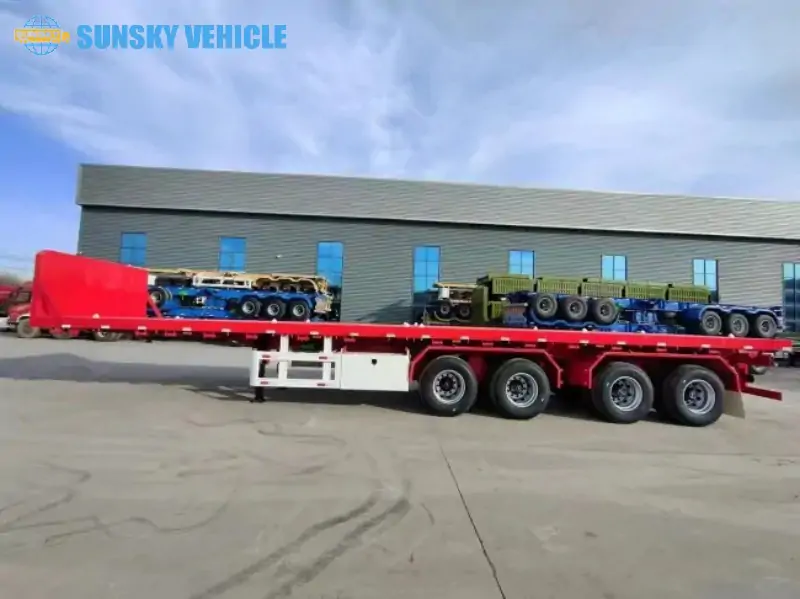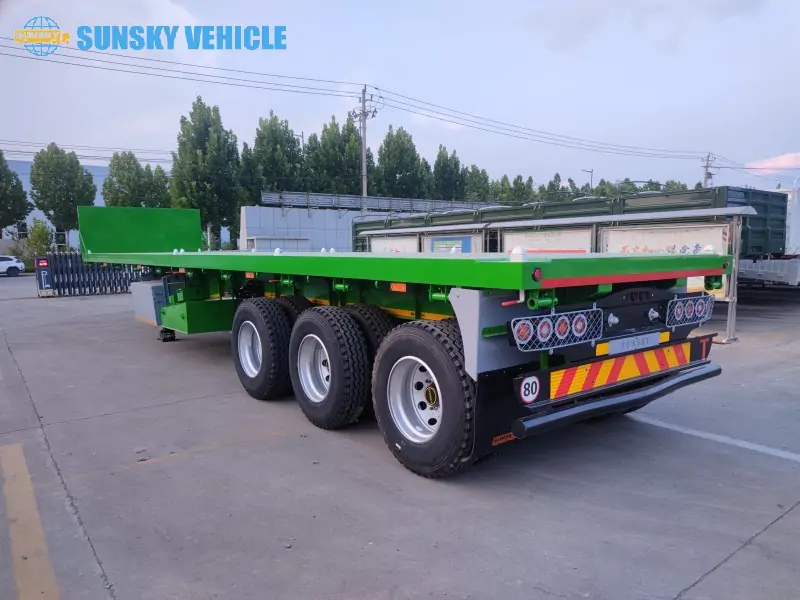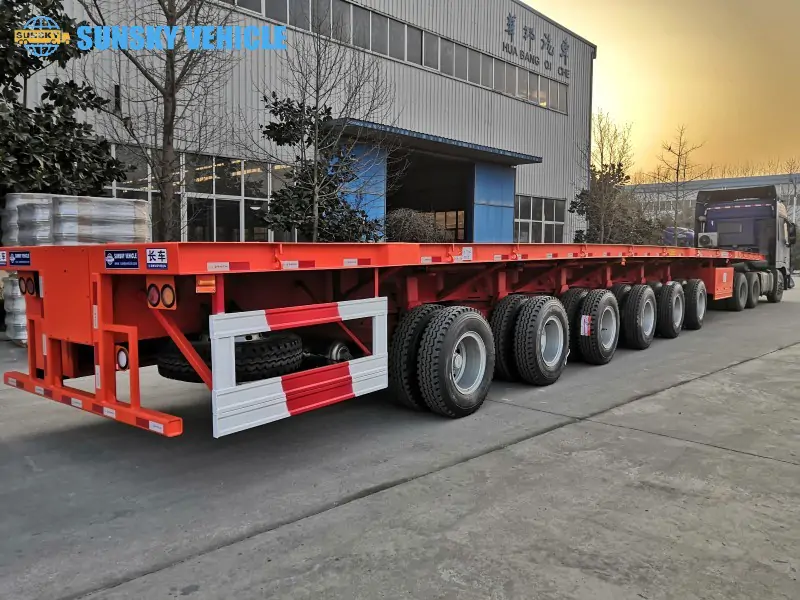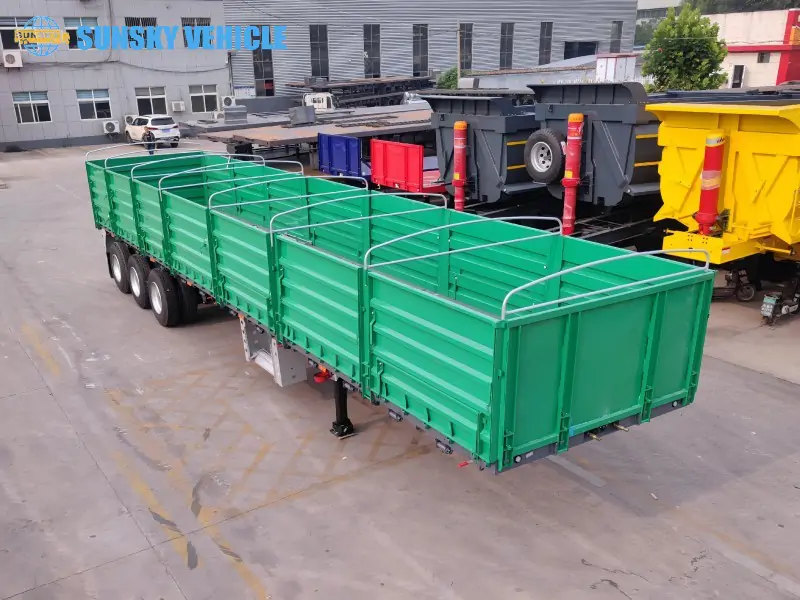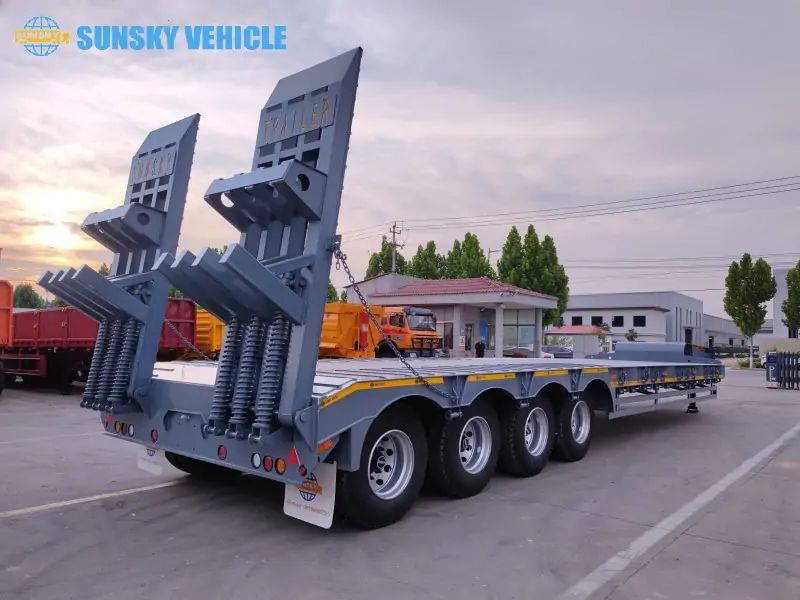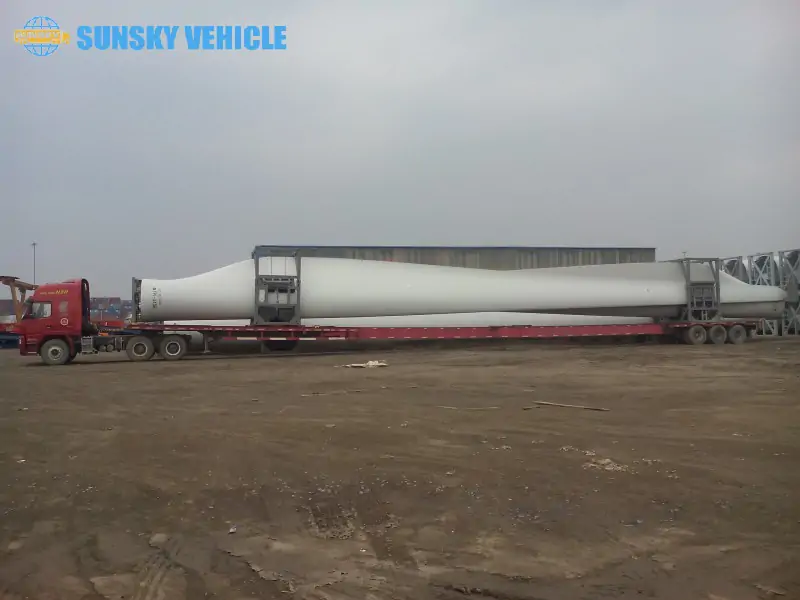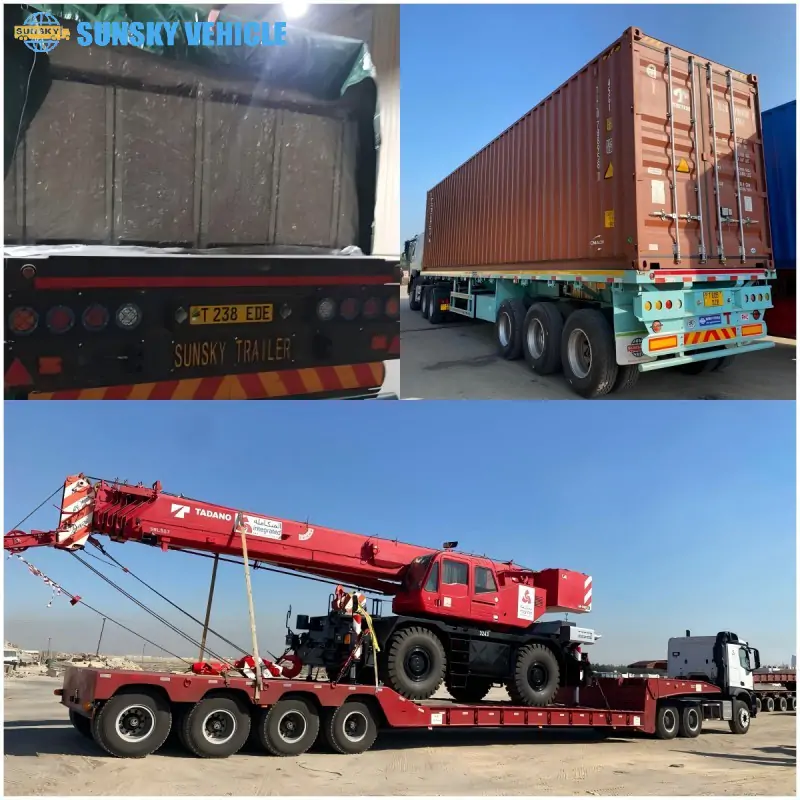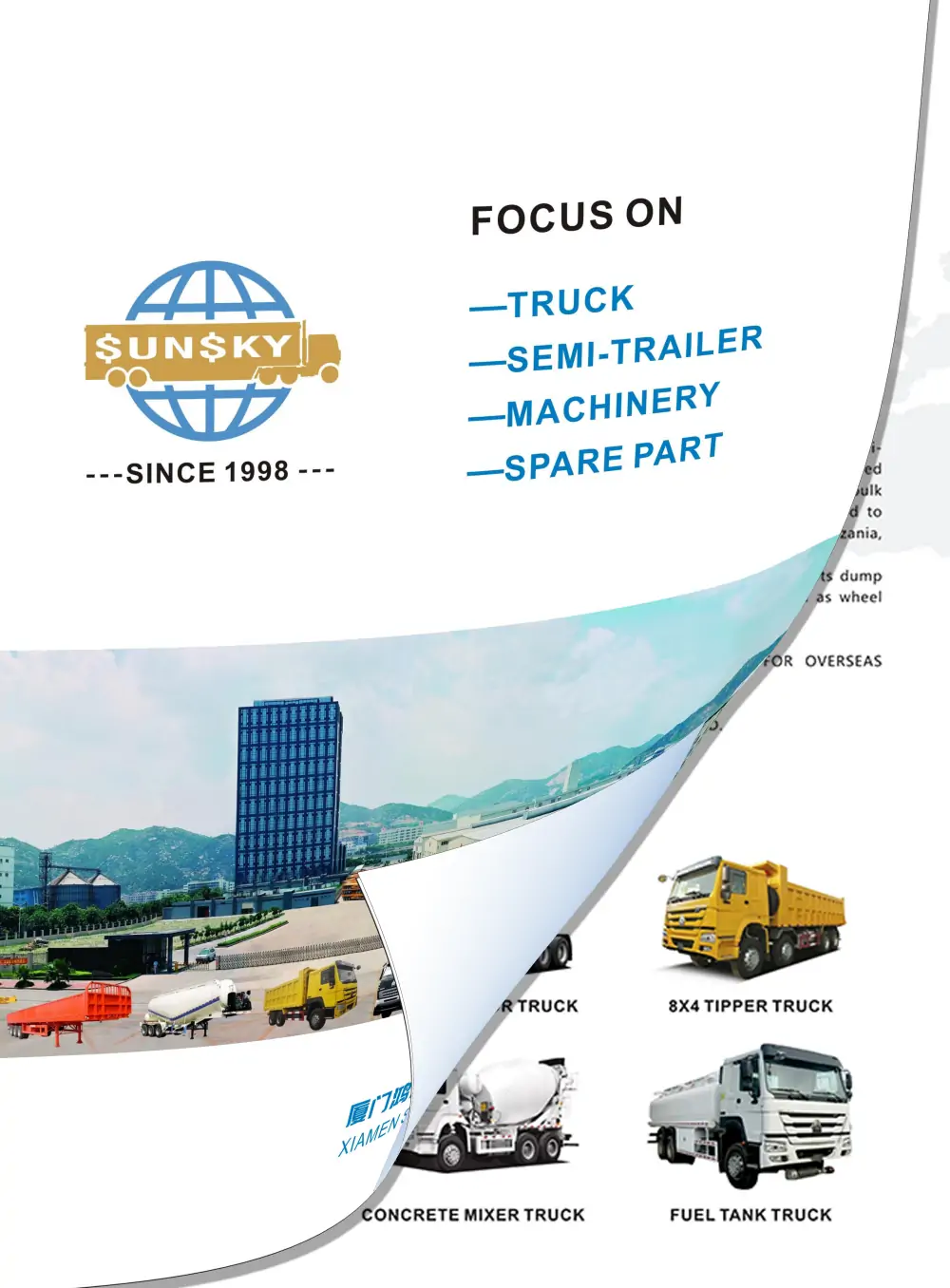Flatbed trailers are one of the most versatile hauling solutions in transportation, but one question dominates every shipment plan: How long is a flatbed trailer? The answer affects route legality, cargo loading, permitting, cost, and safety. While 48 ft and 53 ft trailers are the industry norm, there are shorter, longer, and extendable options that dramatically change what’s possible.
This in-depth guide covers everything from standard dimensions to load types, legal limits, state restrictions, and how to choose the right flatbed length for any freight.
1. What Is a Flatbed Trailer & Why Size Matters
A flatbed trailer is an open-deck platform with no walls or roof, allowing cargo to be loaded from any side. Industries that rely heavily on flatbeds include:
- Construction & infrastructure
- Manufacturing & heavy machinery
- Energy (oil, gas, wind, solar)
- Agricultural equipment
- Steel and lumber distribution
Because there are no fixed sides or ceilings, the deck length becomes the most critical dimension for determining whether freight will fit—and whether it can travel legally.
2. Standard Flatbed Trailer Lengths
The vast majority of flatbeds used in commercial trucking fall into these categories:
48-Foot Flatbed Trailer (Most Common)
- Deck Length: 48 ft
- Width: 8 ft 6 in
- Deck Height: ~60 in
- Max Freight Height (w/o permits): 8 ft 6 in
- Best For: Machinery, general freight, building materials
48 ft is the industry standard and universally legal in all 50 U.S. states.
53-Foot Flatbed Trailer
- Deck Length: 53 ft
- Width: 8 ft 6 in
- Deck Height: ~60 in
- Best For: Longer freight or shippers needing more surface area
Short & Hotshot Flatbeds (12–40 ft)
- Typical Lengths: 12 ft, 20 ft, 30 ft, 36 ft, 40 ft
- Towed by: Pickup trucks or medium-duty tractors
- Best For: Regional loads, urgent deliveries, LTL freight
Extendable/Stretch Flatbed Trailers (Up to 80+ ft)
- Retracted Length: 48–53 ft
- Fully Extended: 65–80+ ft
- Ideal For: Wind blades, long beams, bridge girders, pipelines
3. Legal Length Limits & Regulations
Flatbed trailers are subject to both federal and state laws in the U.S.
Federal Size Limits (Most States)
| Spec | Legal Maximum (No Permit) |
|---|---|
| Length | 48–53 ft |
| Width | 8 ft 6 in |
| Load Height | 8 ft 6 in |
| Gross Vehicle Weight | 80,000 lbs |
4. Specialized Flatbed Trailer Types: Breaking the Dimensional Limits
When cargo exceeds the 8′6″ height or the 53′ length, specialized trailers are necessary. These designs strategically use drops and extensions to accommodate unusual cargo profiles.
Step Deck (Drop Deck) Trailers: The Height Solution
The Step Deck trailer features two deck levels, allowing for taller cargo without violating total height restrictions.
Total Length: Typically 48 feet or 53 feet.
Deck Distribution: A shorter Upper Deck (approx. 10 ft to 11 ft) and a longer Lower Deck (approx. 37 ft to 43 ft).
Key Advantage: The lower deck height (often 42 inches or 3′6″) allows cargo to reach 10 feet to 10ft 6in in height, providing a crucial 2-foot advantage over standard flatbeds.
Double Drop (Lowboy) Trailers: Maximum Vertical Clearance
The Lowboy is designed for the tallest and heaviest equipment on the road. It utilizes two drops—one after the gooseneck and one before the rear axles—creating a deep, low central platform, or “well.”
Total Length: Usually around 48 feet.
Well Length: The primary low platform length is typically 24 feet to 29 feet.
Deck Height: The well sits extremely low, often only 18 inches to 24 inches off the ground.
Maximum Cargo Height: This minimum height allows for cargo as tall as 11 feet 6 inches to 12 feet while remaining under the total legal road height limit.
Extendable Flatbed (Stretch Trailer): Conquering Extreme Length
Extendable flatbeds are essential for shipments that drastically exceed the 53 ft mark, such as wind turbine blades or long structural components.
Length Range: These can stretch from a base of 48 feet up to 80 feet or more, depending on the model and the manufacturer’s specifications.
Permit Requirement: Due to the extreme length, operation of these trailers always requires special oversize permits and often mandatory pilot/escort vehicles in every jurisdiction they pass through.
5. How to Choose the Right Length
Factors to consider:
- Cargo Dimensions: Measure freight length, height, and overhang
- Loading Method: Crane, forklift, side-load, dock access
- Route Restrictions: City access, bridge laws, turning radius
- Permit Requirements: Over 48–53 ft may require approval
- Cost & Efficiency: Longer trailers ≠ always cheaper
Freight Type Examples
| Freight Type | Suggested Trailer |
|---|---|
| Lumber & drywall | 48 ft |
| Beams > 48 ft | Extendable / 53 ft |
| Oversized machinery | Step deck / double drop |
| Pipes & wind blades | Extendable |
| Regional LTL loads | 20–40 ft hotshot |
6. Flatbed Trailer Size Comparison Table
| Trailer Type | Length (Typical) | Max Load Height | Notes |
|---|---|---|---|
| Standard | 48–53 ft | 8 ft 6 in | Most flexible, open deck |
| Step Deck | 48–53 ft | 10 ft | Better for tall cargo |
| Double Drop | 48–50 ft | 11–12 ft | Machinery & oversize loads |
| Extendable | 48–80+ ft | 8 ft 6 in | Long beams, turbines, girders |
| Hotshot | 12–40 ft | 8 ft 6 in | Regional/expedited loads |
7. Frequently Asked Questions
Q1: What is the most common flatbed trailer length?
48 ft is standard in the U.S.
Q2: How long is a 53-foot flatbed trailer?
53 ft deck, for longer or higher volume freight
Q3: Can a flatbed be longer than 53 ft?
Yes—extendable flatbeds can reach over 80 ft with permits
Q4: How long can extendable flatbeds go?
65–80+ ft depending on model
Q5: Do I need a permit for oversized length?
Yes, if the cargo exceeds legal limits
Q6: What is the shortest flatbed trailer?
Hotshot trailers: 12–40 ft
Q7: Can freight overhang a flatbed?
Limited overhang allowed; state laws vary
Q8: How tall can freight be on a flatbed?
Standard max height: 8 ft 6 in; step/deck trailers allow more
Q9: What’s the weight limit on a flatbed?
Up to 80,000 lbs GVW
Q10: Is a 53 ft flatbed legal everywhere?
Not always; some non-interstate roads restrict it
8. Real-World Loading Scenarios
Steel Beams (46 ft)—Use a 48 ft trailer; may require small overhang flags
Utility Poles (60 ft)—Extendable trailer with permits required
Construction Machinery (Tall) – Step deck or double drop
Regional LTL Freight – 20–30 ft hotshot trailers
Wind Turbine Components – Extendable flatbed + multi-state permits
9. Conclusion: Mastering Flatbed Dimensions for Efficient Transport
The correct flatbed trailer size is a dynamic variable determined by your specific cargo and the regulatory environment of your route. Whether you rely on the standard 48 ft model, need the capacity of 53 ft, or must utilize the specialized height advantage of a Lowboy, mastering these dimensions is non-negotiable for success.
Before moving or purchasing any trailer, your first step must be to verify the precise dimensions of your freight against the current legal regulations of the destination and transit countries. Only through accurate measurement and adherence to compliance can you achieve the safest and most cost-effective haul.
Contact our team of experts today for tailored advice and quotes on flatbed trailer solutions that meet your exact specifications and regional regulatory challenges.

